Importance of Rain Gear for Construction Workers
Regardless of the weather forecast, construction work rarely grinds to a halt. Even maximum rain won't stop construction workers from performing their duties, making rain gear a critical piece of clothing. Don't let the rainy day blues get you down. Instead, understanding the importance of rain gear can have a profound impact on your safety, convenience, and productivity.
Safety
First and foremost, safety is a paramount aspect to consider. Here's why:
- Prevents Slip and Fall Accidents: Naturally, rain makes surfaces slippery. Wearing water-resistant boots with anti-slip soles can prevent accidents on wet, slippery surfaces.
- Visibility: Most rain gear is designed with reflective materials that make the wearer easily noticeable in low light conditions, thus preventing accidents.
- Avoids Hypothermia: Working for long hours in the rain can reduce body temperature, leading to hypothermia. Rain gear helps maintain the body's temperature by keeping workers dry.
Convenience
- Keeps Workers Dry: A no-brainer, indeed! Construction workers can continue working without being bothered by the rain, thanks to rain gear.
- Allows Flexibility: Modern rain gear is made lightweight and flexible, allowing for ease of movement while working.
Productivity
- Less Downtime: With proper rain gear, workers are well-protected from the rain, ensuring fewer interruptions and more work done.
- Healthier Workers: Rain gear protects workers from getting sick due to prolonged exposure to cold and rain, resulting in fewer sick days.
To put it succinctly, rain gear is non-negotiable for construction workers. It enables them to perform their duties effectively without compromising their safety and comfort, keeping productivity at an all-time high. By investing in high-quality rain gear, one is essentially investing in their health, protection, and ability to carry out their work efficiently, even when the weather conditions are less than ideal. Remember, being prepared for unpredictable weather conditions goes a long way in the construction industry.
Types of Rain Gear
When it comes to staying dry in wet weather, having the right rain gear is crucial. A key factor in choosing rain gear is considering what type of activity you'll be doing. Whether you're hiking in a downpour, cycling in light drizzles, or anything in between, the right apparel can make all the difference. This handy guide will help you navigate through five popular types of rain gear: jackets, pants, overalls, boots, and accessories.
Jackets
Rain jackets are, arguably, the most common form of rain gear. They're designed with materials that repel water and shield you from the wind, typically featuring hoods for extra protection. They range from light, packable jackets for casual wear to heavy-duty ones designed for extreme weather conditions.
Some key characteristics of quality rain jackets often include:
- Waterproof materials
- Taped seams
- Breathability
- Packability
Pants
If your adventures take you through wet foliage or persistent rain, waterproof pants can offer crucial lower-body protection. They're typically lightweight and packable, mimicking the convenience of rain jackets. You'll frequently find models with side zippers facilitating easy removal, even with boots on.
Overalls
Rain overalls, or bibs, are another fantastic option for comprehensive protection. They cover the upper and lower body, making them a great choice for heavy rainfall or water-related activities like fishing.
Boots
Wet feet are a quick route to discomfort. Thus, waterproof boots are an essential part of any rain gear set. Whether you prefer hiking boots, rain boots, or insulated winter boots, make sure they feature a waterproof material like rubber or Gore-Tex.
Accessories
Lastly, don't forget about accessories. Essentials like waterproof gloves, hats and bags can offer additional protection from the elements. And for those who wear glasses, consider investing in hydrophobic lens coatings to keep your vision clear in a downpour.
All in all, remember - the best rain gear isn't one-size-fits-all. It's about finding the combination of clothing and accessories that best suits your needs and the specific conditions you'll be facing. From jackets to boots, investing in quality rain gear ensures you stay comfortable and dry, no matter what Mother Nature throws your way.
Materials Used in Rain Gear
The heavens open up without a hint of warning—and you're caught in the middle of a downpour! Moments like these make us appreciate the existence of rain gear, designed ingeniously to stand as a protective wall between us and the furious rain. But have you ever paused to wonder, "What materials are used in rain gear?" Primarily, these rain-repelling warriors, from raincoats to waterproof trousers, are made from three main materials: PVC, Nylon, and Polyester.
PVC
Polyvinic Chloride or PVC, familiar to many of you, earns its reputation as an essential material in rain gear. With its superb waterproof qualities and infallible impermeability, PVC keeps you dry, even in a persistent, heavy rain. This lightweight crystalline polymer is also flexible and versatile, adapting to various forms without losing its defensive properties. One thing to consider with PVC, however, is its breathability—or rather, lack thereof. While it does an excellent job keeping water out, it also tends to trap heat and perspiration, making it less comfortable during long periods of wear.
Nylon
Enter Nylon, another reliable partner in the world of rain gear. Strong and durable yet surprisingly light, Nylon's water-resistant properties are boosted when treated with waterproofing solutions, making it a popular choice for high-quality rain gear. Moreover, compared to PVC, Nylon breathes better, providing a more comfortable experience for the wearer over extended periods. However, it's worth noting that Nylon, while water-resistant, may not provide as complete a water barrier as PVC—especially in more extreme weather conditions.
Polyester
Finally, we have Polyester. This synthetic material holds up well under the onslaught of torrential rain, primarily when treated with waterproof coatings. Praised for its strength and durability, Polyester matches Nylon's breathable nature, granting a more comfortable wear. An added benefit of Polyester is its resistance to UV damage, thereby improving the longevity of your rain gear.
"Rain dances to its symphony on the roof of your gear, but you remain dry underneath—a testament to the advances in material science. Whether it's the excellent water-proofing of PVC, Nylon's breathable toughness, or the UV resistant Polyester, it's clear each material plays an integral role in crafting reliable rain gear.
Next time you find yourself caught in a sudden downpour, remember the hardy materials that keep you dry and comfortable. After all, there's no such thing as improper weather, only inappropriate clothing."
Features to Consider When Buying Rain Gear
When it comes to staying dry in wet weather, the right rain gear can make all the difference. But with so many options available, how do you know which features are important? Whether you're hiking in a drizzle or braving a downpour, here are a few key attributes to look for when buying rain gear.
Water Resistance
This is the fundamental feature of any worthwhile rain gear. While the term 'waterproof' seems straightforward enough, it's vital to dig a little deeper. Consider factors like how the gear is constructed and explore the intricacies of the fabrics and materials. Products with a hydrophobic coating, for instance, offer excellent water resistance. However, it's important to bear in mind that while these coatings ward off water effectively, they may also wear off over time and require reapplication.
Breathability
While the primary goal of rain gear is to keep you dry from the outside, ensuring that you don't get wet from perspiration on the inside is equally important. Breathability often comes down to the material of the gear. Membrane-style fabrics like Gore-Tex offer excellent moisture-wicking properties, allowing sweat and heat to escape while preventing water from penetrating. Choosing rain gear with adjustable vents can also help promote airflow.
Durability
Just because it's raining doesn't mean outdoor adventures need to stop. However, gear that can't withstand the rigors of the great outdoors will likely leave you wet and miserable. Look for gear crafted from durable materials like nylon or polyester that can handle scrapes and knocks. Additionally, quality zippers and reinforced seams will aid in longevity.
Comfort
Comfort is often overlooked but is paramount to enjoying your time outdoors, rain or shine. Gear that's too tight can restrict movement, while too loose can let water sneak in. Look for items with an adjustable drawstring waist, hood, and cuffs for a customized fit. Also, consider rain gear that is lightweight and packable for convenience and ease-of-use.
Ease of Cleaning
After a day out in the rain, your gear will undoubtedly need a clean. Some materials are easier to clean than others, so consider this when making your selection. Most rain gear can be wiped clean with a damp cloth, but for more serious dirt, machine-washable options might be a more practical choice.
In the quest for the perfect rain gear, remember that a "one-size-fits-all" solution rarely exists. Evaluate your specific needs, taking into account the climate and your planned activities. With the right research, you'll stay dry and comfortable no matter what the weather throws at you!
How to Maintain and Care for Your Rain Gear
Regardless of the intensity of the rainfall, your rain gears are your surest bet for staying dry. But, have you ever paused to consider what it takes to maintain and prolong the efficiency of these trusty equipment? Proper care and maintenance of your rain gears not only amplify their durability but also ensure they continue offering top-notch water resistance. Here are a few tips, tricks, and guidelines for maintaining the longevity and maximum efficiency of your gear.
Cleaning
First up, we delve into the critical aspect of cleaning your rain gear. Unlike regular clothes, rain gears require a unique washing regimen to retain their exceptional water repellence. Here's a simple routine you can follow to keep your gear in top shape:
- Never use traditional detergents: Traditional detergents can interfere with the water-resistant layer of your gear leading to a decline in protection. Opt for specialty cleaners designed for technical outerwear.
- Lay flat to dry: After washing your gear, avoid wringing or harshly squeezing it. Instead, lay it flat or hang it to dry.
- Apply a DWR treatment: Over time, the Durable Water Repellent (DWR) coating on your gear may wear off. Therefore, it's crucial to apply a DWR treatment after several washes to revitalize the water-resistant properties.
Storage
Keeping your gear correctly when it's not in use is equally crucial to ensuring its longevity and efficiency. Here are a few pointers:
- Avoid damp areas: Always store your gear in a dry area to avoid mildew and mold which can degrade the gear's material.
- Keep away from direct sunlight: Prolonged exposure to sunlight can lead to the fading and general deterioration of your gear. Thus, always store it in a cool, dark place.
Repair
Despite your best efforts, your gear might suffer occasional wear and tear. The key to maintaining optimal functionality is not to panic but to turn to these simple repair tips:
- Patch up any holes: Small holes or tears can be simply mended using patches or gear repair tape to reinstate the gear's integrity.
- Seek professional help: For significant damage or complicated issues, don't hesitate to reach a professional. They have typically the expertise and the right tools to restore your gear's functionality.
Remember, the longevity and peak performance of your rain gear are hinged on your care and maintenance regimen. Keeping your gear clean, stored appropriately, and quickly repairing any damage would ensure you stay dry whatever the weather may throw at you.
Potential Pitfalls to Avoid When Buying Rain Gear
Rain gear is an outdoor enthusiast's secret weapon against the whims of weather. When the sky opens and everything turns wet, you'd be glad you invested in a good set of rain gear. But getting the perfect rain gear can be a maze of confusing terms, misleading descriptions, and even misguided advice. So, today, we tackle some common mistakes and misconceptions when choosing rain gear and offer you advice on how to circumnavigate them successfully.
Misunderstanding Breathability
One common pitfall buyers often fall into is misunderstanding the term "breathability." Many rain gear products claim to be breathable. Still, the level of breathability can vary drastically depending on the materials used and the overall design of the product. The perfect rain gear should be a balanced blend of high-quality water resistance and adequate breathability. Consider this your golden rule: breathability doesn’t mean the rain gear will sustain high levels of physical exertion without causing sweat - it just means the fabric can expel the vapor to some extent.
Ignoring The Fine Print
There's an old saying, "The devil is in the details," and never is it truer than when purchasing rain gear. Look beyond the bold claims and enticing pictures. Make a point to read and understand the fine print. Go for rain gear that has extensive and detailed product descriptions. The more you know about a product, the better your purchase decision will be. Be wary of products with vague product descriptions and bold unsubstantiated claims.
Overlooking the Importance of Layering
Functional layering is key to staying comfortable in diverse weather conditions. Yet, many people overlook this. Your rain gear should be able to accommodate a base layer for warmth and an inner layer for moisture management without feeling too tight or restrictive. It’s all about the perfect layering technique: the base layer keeps you warm, the middle layer soaks up sweat and provides insulation, and the outer layer protects you from the rain.
Prioritizing Price Over Quality
Price is an important factor, but it shouldn't be the definitive one. Consider the quality of the fabric, the design, the craftsmanship, and the fit. Remember, you may need to pay a bit extra for a product that effectively keeps you dry and lasts longer. Affordable can be attractive, but not at the cost of compromised quality and functionality.
Choosing the perfect rain gear is more than just ticking off a checklist. It’s about understanding your needs, acknowledging your activity levels, and recognizing the subtleties – staying informed, reading the fine print, layering appropriately, and not compromising quality over cost. Achieve these, and the path to perfect rain gear might not be as slippery as you think.
Conclusion
Purchasing the right rain gear can, quite literally, be the difference between staying dry and productive or being drenched and miserable on the job site. Weather can be unpredictable, but your safety and comfort should never be. With the evolution of technology, today's rain gear ensures that you won’t have to choose between durability and comfort.
If you're a construction worker preparing for the eventual downpour, a well-chosen piece of rain gear is your best and first line of defense against Mother Nature’s wrath. Remember to consider not just the water resistance of your gear, but also its breathability, durability, comfort, and ease of cleaning.
Why settle for less when you can have the best? Choose Hurricane Raingear. All our products prioritize both staying dry and being comfortable, without compromising on either aspect. They are robust, waterproof, yet completely breathable for optimal comfort. Each is uniquely crafted in the Pacific North West, meeting the needs of all kinds of outdoor enthusiasts. With our Hurricane rain gear, be sure to face any weather challenge thrown at you.
Choose wisely, choose Hurricane Raingear. Your comfort, safety, and peace of mind in the face of unpredictable weather, depend on it. Here's to staying dry and remaining productive, even amidst the stormiest conditions!
Frequently Asked Questions
-
What are the top considerations when choosing rain gear for construction workers?
The top considerations when choosing rain gear for construction workers are material quality, waterproofing capabilities, durability, comfort, visibility, and functionality.
-
What materials are best for rain gear in construction?
The best materials for rain gear in construction are typically waterproof and breathable fabrics such as Gore-Tex, PVC-coated nylon, or polyurethane-coated polyester.
-
Should I prioritize waterproofing or breathability in rain gear for construction?
Ideally, you should prioritize both waterproofing and breathability in rain gear for construction. It's crucial to keep dry in wet conditions while allowing moisture and sweat to escape to maintain comfort.
-
What additional features should I look for in rain gear for construction?
Some additional features to consider when choosing rain gear for construction include adjustable hoods and cuffs, reinforced seams, reflective strips, multiple pockets, and compatibility with other safety equipment.
-
How do I determine the appropriate size for rain gear in construction?
To determine the appropriate size for rain gear in construction, refer to the manufacturer's sizing chart and consider wearing layers underneath for added insulation and versatility.



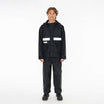
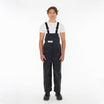
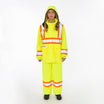
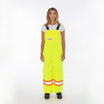
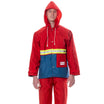
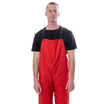
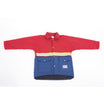
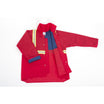
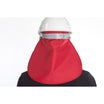

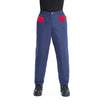
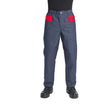
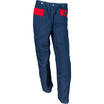
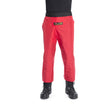
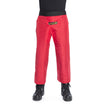
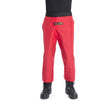
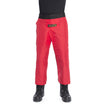
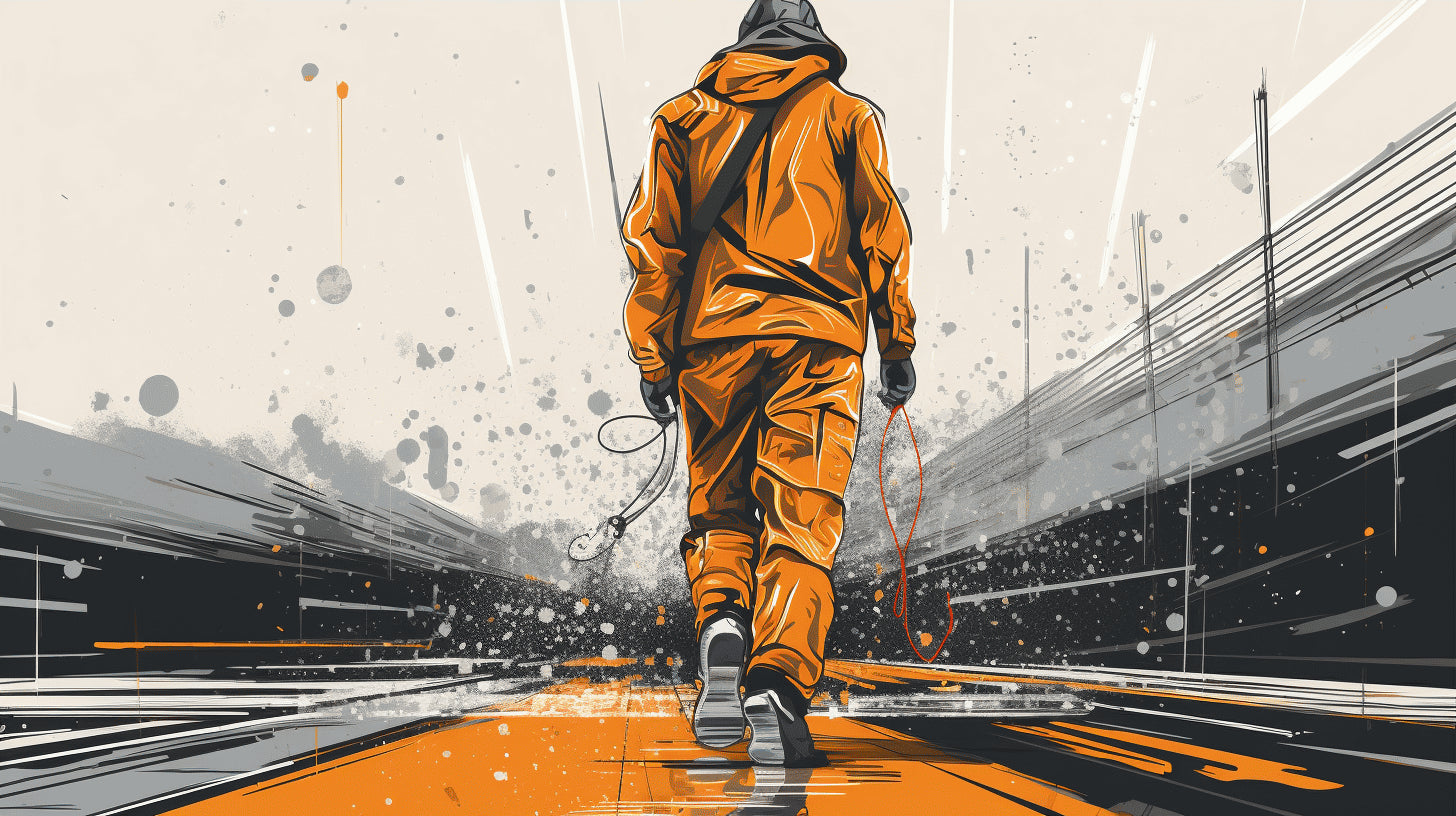

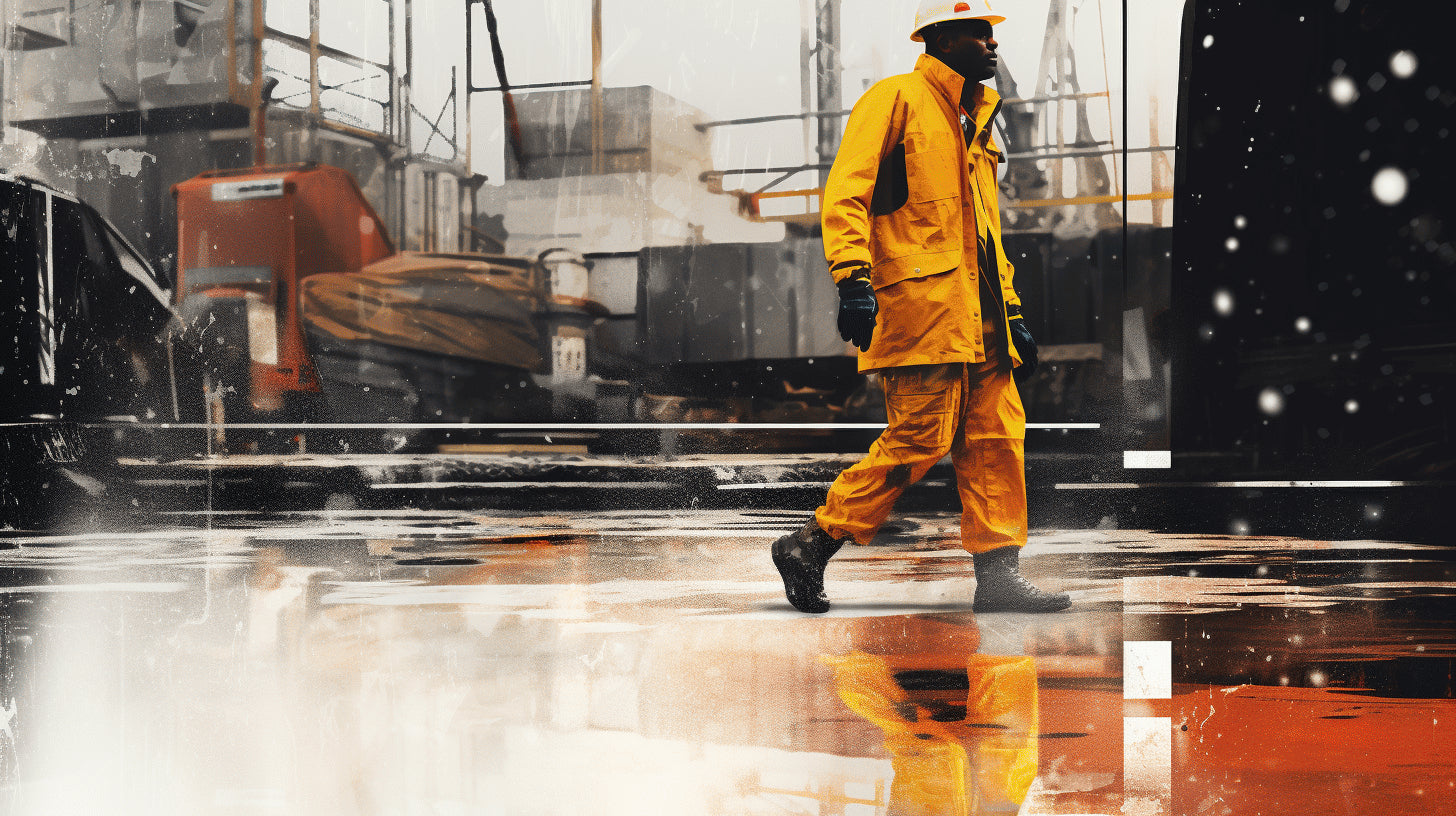
Leave a comment
This site is protected by hCaptcha and the hCaptcha Privacy Policy and Terms of Service apply.